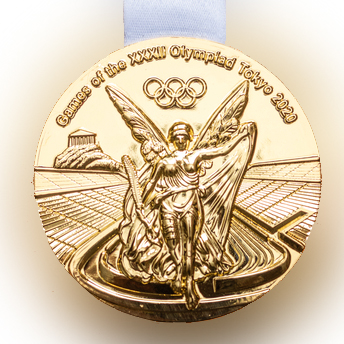Those most prized treasures of the elite athletes, Olympic gold medals, are actually less valuable in real terms as they are mostly made of silver.
The Olympic games have not handed out solid gold medals since the 1912 summer games in Stockholm, Sweden. In more modern times, on average, gold medals are 93 per cent silver and six per cent copper, leaving about one per cent (or six grams) for the highly prized gold finish.
Weighing in at 412 grams, around the weight of a tin of beans, the gold medal is made up of only 1.34% gold.

Melted down and sold at today’s market value, the raw materials used to make a gold medal would be worth about £500. In comparison, the silver medal, which is made up of 93% silver and 7% copper, would be worth about £250. The bronze medal, mostly made of copper, would be worth less than a fiver. But to those who have earned them, they are priceless.
The 2,300 London 2012 Olympic medals were made from nearly nine tons of metal from two mines mine in Salt Lake City and Mongolia and the medals were guarded at the Tower of London until the games began on July 27th that year. Team GB’s haul was 65 medals, retaining 29 Gold, 17 Silver and 19 Bronze in the country.
This year’s medals are made from material recycled from electronic devices donated by the people of Japan. The Tokyo 2020 Olympic gold medals are made slightly differently and contain more than six grams of gold plating on pure silver. The Silver medals are pure silver and the Bronze medals are red brass (95% copper and 5% zinc).
Are you a passionate sportsperson? You might be interested in learning more about our Sport, Active Health and Fitness qualifications.
